
When people think of a fox, they usually only have one image in mind: the cartoonish orange dog-like animal they often see on TV. They aren’t wrong, but there are many other types of foxes out there.
What is a fox?
A fox is an omnivorous mammal from the Canidae family. They are small to medium in size and have very distinct features. All foxes have triangular ears and a pointed snout, as well as long, bushy tails.
People call female foxes “vixens,” while a male fox is often called a dog, tod, or “reynard.” As for baby foxes, people call them cubs, pups, or kits. Given their similar names and appearances, people often mistake foxes for dogs.
Is a fox a dog?

Many people ask this question. Some also wonder, “are foxes feline or canine?” because of how foxes can also be similar to cats. Scientists, however, point out that foxes are not feline. Foxes and cats are not related to one another.
As for dogs, they share a common ancestor. Some people believe foxes descended from wolves, the same way dogs did. However, foxes developed differently than dogs. This caused them to have characteristics unique from dogs, such as vertical pupils and their retractable claws.
However, some also believe that foxes might not even be related to wolves at all. Ancient fossils of foxes were found alongside the fossils of wolves, which can suggest the existence of foxes alongside their supposed ancestors.
Either way, both foxes and dogs belong to the family Canidae. This means they are both canines.
How many types of foxes are there?
The answer to this question might vary. Some might answer 12 types, while some might say that over 30 types of foxes exist. While it might be confusing at first, both answers are correct.
There are 12 “true” types of foxes. These refer to fox species that fall under the genus Vulpes. Each of these types also has its own subspecies.
The other types of foxes are those that have the same characteristics but fall under a different genus. As they are both from the Canidae family, however, they bear a lot of similarities.
This list of the types of foxes includes the true fox types and many more. If you’re interested in learning more, then keep on reading!
What are the true types of foxes?
Arctic Fox
Scientific name: Vulpes lagopus

One of the most popular types of foxes is the arctic fox. As the name suggests, you can find the arctic fox in the Arctic regions. They live in parts of Eurasia, North America, Iceland, and Greenland.
Most arctic foxes have white fur. However, there are also blue arctic foxes, whose fur is a charcoal gray color. The pale color of their fur helps them blend in with the snow.
Unlike most animals, arctic foxes do not hibernate in the winter. They have thick fur underneath their feet that protect them from frostbite. Their favorite food is lemmings and rodents. When it is spring, they will also feed on vegetation.
Bengal Fox
Scientific name: Vulpes bengalensis

Another name for the Bengal fox is the “Indian fox.” The Bengal fox lives in grassland areas of India, Nepal, and Pakistan. They prefer semi-deserts where they can build their dens underground.
Bengal foxes have pale fur, and their large, bushy tails end with a black tip. Despite their cute appearance, a lot of people still wonder if foxes are dangerous. Out of the different types of foxes, Bengal foxes are one of the tamer ones. They also prefer to hunt alone. Unfortunately, this makes them easy for humans to hunt.
Bengal foxes mostly prey on small birds, reptiles, and insects. They will also eat fruits if their dens are close to vegetation.
Blanford’s Fox
Scientific name: Vuples cana
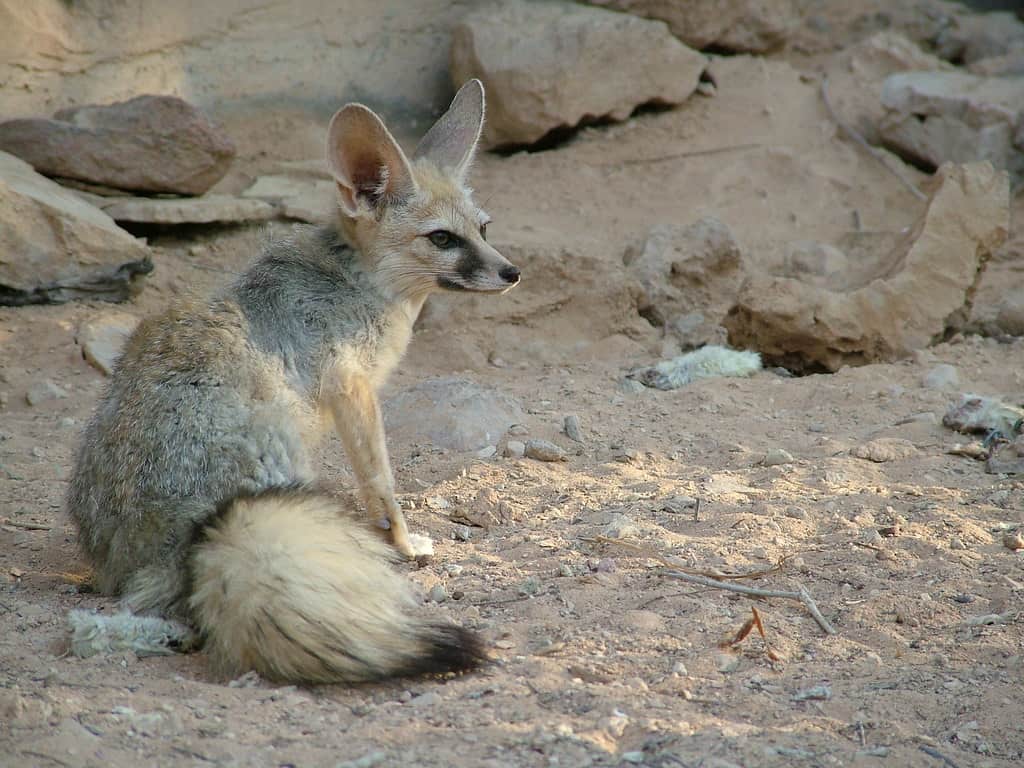
Some types of foxes prefer living in mountain ranges. One example is the Blanford’s Fox. The Blanford’s fox lives in the rocky cliffs of Israel and Afghanistan. They can also be found in Saudi Arabia, Oman, and the United Arab Emirates.
Blanford’s foxes have brownish-gray fur. They look similar to fennec foxes but are slightly bigger. This fox species mostly eats insects and fruit, as well as small mammals like mice.
This fox species is named after the English geologist and naturalist, William Thomas Blanford. Some also call this fox species the “Afghan fox.”
Cape Fox
Scientific name: Vuples chama

The Cape fox occupies the desert regions of Southern Africa. You can find plenty of them in South Africa, Zimbabwe, and Botswana. They are desert foxes that prefer semi-desert areas over forests. Out of the different types of foxes, they are the only ones in Africa who live under the equator.
This fox species has silver-gray fur with yellow sides. Its long tail also has a black tip. Cape foxes are nocturnal, so they stay away at night and sleep in the morning. They like to eat small mammals and fruits.
Another name for the cape fox is “silver-backed fox.”
Corsac Fox
Scientific name: Vuples corsac

One of the types of foxes that live in Asia is the corsac fox. While most of them occupy Central Asia, some corsac foxes also live in northeastern parts of China and Mongolia. Corsac foxes are desert foxes, so they prefer to live in deserts instead of forest areas.
The corsac fox is medium-sized. Their fur color can differ. Some have yellow fur, while some have gray fur. Like cape foxes, corsac foxes are nocturnal.
One more thing you should know about corsac foxes is that they are not quick runners. They are, however, excellent climbers. They are likely to escape their predators if they can find a cliff or tree to climb.
Fennec Fox
Scientific name: Vuplus zerda

The fennec fox is another desert fox that lives in the Sahara Desert and some parts of Israel. The body of a fennec fox is well-adapted to the heat. In fact, its large ears can dissipate body heat.
Many know the fennec fox because of its adorable appearance. This is because a fennec fox is very small. The average weight of a fennec fox is only around 4 lbs.
What makes the fennec fox stand out from other types of foxes is its huge ears. The fennec fox is the world’s smallest canine, which makes its big ears stand out even more. Its big ears, however, aren’t just for show. A fennec fox has great hearing ability that it uses to listen for small rodents and other prey underground.
Kit Fox
Scientific name: Vulpes macrotis

Next on this list of the different types of foxes is the kit fox. The kit fox lives in the southwestern United States and northern Mexico. While they are desert foxes, some kit foxes also like to live in grasslands.
Kit foxes have gray and sandy brown fur. Some also have red and gold fur around their arms and legs. Kit foxes are small-sized, and they have big pointed ears. There are many kit fox subspecies, such as the San Joaquin kit fox. Unfortunately, they are endangered, and what remains of their population currently live in San Joaquin Valley, California.
These nocturnal foxes hunt at night, and they usually go for rabbits and mice. They also eat cactus fruits, tomatoes, and other fruits.
Pale Fox
Scientific name: Vulpes pallida

Plenty of types of foxes live in Africa. One example is the pale fox. The pale fox lives in Sudan, Somalia, and other parts of northern Africa. This fox species likes to make dens deep underground and near vegetation.
As the name suggests, the pale fox has pale sandy fur. Some pale foxes have a distinct black ring around their eyes.
One fact about pale foxes is they live in family units. Usually, three pale foxes burrow together in a den. Their diet mostly comprises insects, birds, and eggs, which they share like any normal family.
Red Fox
Scientific name: Vulpes vulpes

The largest species out of all the types of foxes is the red fox. They can be found in different parts of the globe, including Central America, Europe, Africa, and Asia. As the most common fox type, they are also the most popular.
As the name suggests, the red fox has reddish fur. However, there are also some red foxes with different fur colors. Some examples are melanistic foxes like the silver fox. Silver foxes can have black or blueish gray furs. Red foxes also shed fur when warmer seasons arrive.
Most red foxes feed on small mammals, fruits, and insects.
Rüppell’s Fox
Scientific name: Vulpes rueppellii

The name, Rüppell’s Fox, comes from the name of a German naturalist, Eduard Rüppell. This fox species lives in North Africa, but some also populate Iran, Israel, and Syria. They prefer dry areas with stones and boulders.
Most Rüppell’s Foxes have sandy beige fur. This helps them blend in well with their surroundings. Rüppell’s Foxes also come in different colors, such as gray.
Their territory can overlap with red foxes, so they often have to move. Otherwise, they end up fighting over resources. Like most types of foxes, Rüppell’s Foxes eat vegetation and mice. They will also feed on roots and lizards.
Swift Fox
Scientific name: Vulpes velox
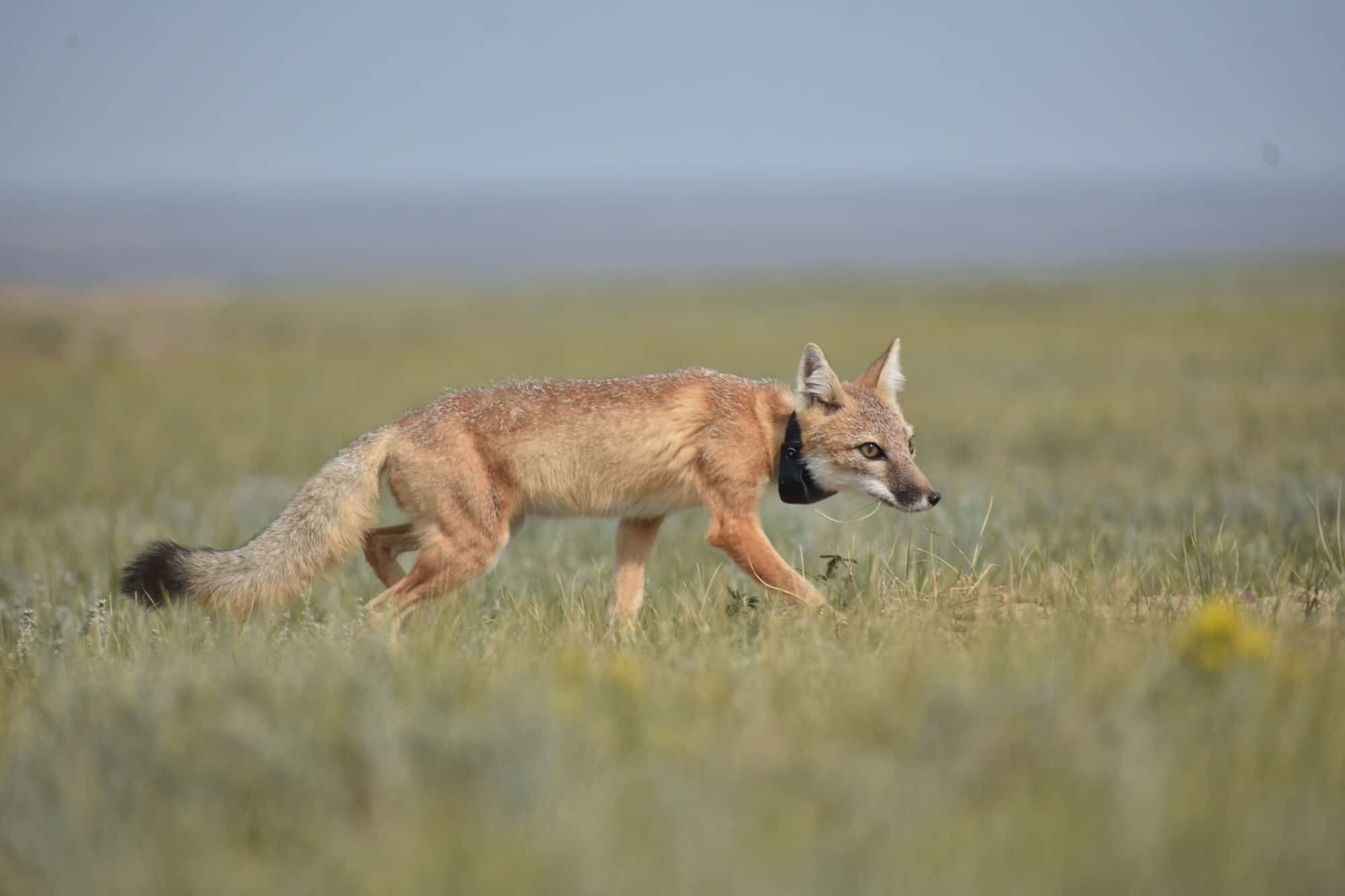
Several types of foxes prefer desert areas. The swift fox is no different. The swift fox is a desert fox that lives in North America, Texas, and western Canada. Many of them also populate Kansas and New Mexico.
Swift foxes are one of the smaller foxes, and they have light grayish fur. This fox species is nocturnal. However, you can sometimes find them out and about during winter mornings.
Unfortunately, the swift fox is endangered. A loss of habitat contributed to its declining numbers. Plowed fields and farmlands destroyed many of their dens.
Tibetan Sand Fox
Scientific name: Vulpes ferrilata
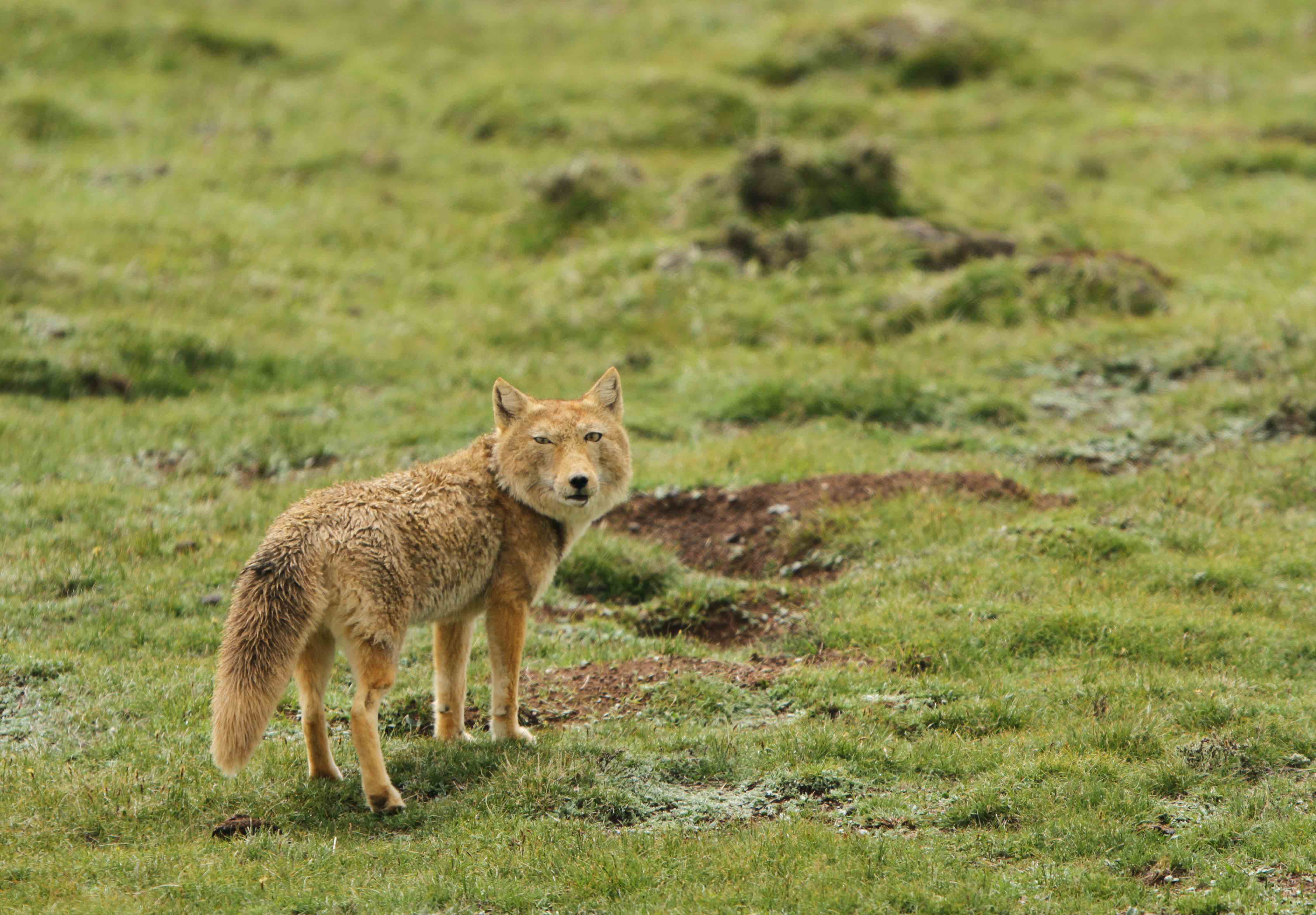
As its name suggests, the Tibetan sand fox lives in the Tibetan Plateau. It also populates areas of Nepal and India. These desert foxes are high-altitude dwellers, so you’ll find them on mountains and cliff sides. They like to burrow under large boulders too.
The Tibetan sand fox has orange to tan fur. They look a bit different from other foxes because of their head shape.
Many types of foxes mate for life. This is true for Tibetan sand foxes too. These monogamous foxes will stay with their partner forever. They hunt together and share their food. Most Tibetan sand foxes prey on rabbits, pikas, and birds.
What are some of the other types of foxes?
Bat-Eared Fox
Scientific name: Otocyon megalotis

Native to the African savannah, the bat-eared fox is one of the smaller foxes. Its large ears are like a bat’s, which is where its name comes from. This fox species has tan to brown fur, which helps it blend in with its surroundings.
The bat-eared fox is the only fox species in the genus Otocyon. Originally, scientists did not classify them as foxes. Instead, they saw bat-eared foxes as jackals. However, they later reclassified them after finding them more closely related to foxes.
This fox species’ diet differs from other types of foxes. 80% of a bat-eared fox’s diet comprises termites. It chews termites in large quantities using its teeth. In fact, a bat-eared fox has the most teeth out of all the fox types. It has a total of 50 teeth while most foxes only have 42.
Canadian Marble Fox
Scientific name: N/A

One fox that stands out from other types of foxes is the Canadian marble fox. The Canadian marble fox is a hybrid fox resulting from the breeding of red and silver foxes. This means that they are not naturally occurring species.
The Canadian marble fox has thick, white fur with gray, black, or tan accents. They have distinct black rings around their eyes, which people often compare to a burglar’s mask.
In 355 states, it is illegal to keep a Canadian marble fox as a pet. Some U.S. states allow it, such as Florida, New York, and Ohio.
Other names for the Canadian marble fox include “Arctic Marble fox” or simply “marble fox.”
Chilla Fox
Scientific name: Lycalopex griseus

The chilla, or the South American gray fox, lives in Argentina and Chile. You can find them in grasslands, deserts, and mountain ranges. Some also live near parks and campsites, such as Torres del Paine National Park.
Chillas are slender foxes with thick, reddish-brown fur. As monogamous animals, chillas will live with their mates for life. A mated pair will often hunt and protect their territory together. Like most types of foxes, chillas prey on birds and small mammals. They also like to eat reptiles and fruit.
Another name for the chilla is the “Patagonian fox.” Some also call the chilla the “gray zorro.”
Cozumel Fox
Scientific name: Urocyon sp.

Another one of the “false” types of foxes is the Cozumel fox. It lives on Cozumel Island in Mexico.
The Cozumel fox is quite mysterious. People know very little about the Cozumel fox. This is likely because there are only a few recorded sightings of the Cozumel fox. In these reports, they described the fox species as small and “squirrel-like.”
Because the last sighting was in 2001, scientists are unsure whether to classify them as extinct or critically endangered.
Crab-Eating Fox
Scientific name: Cerdocyon thous
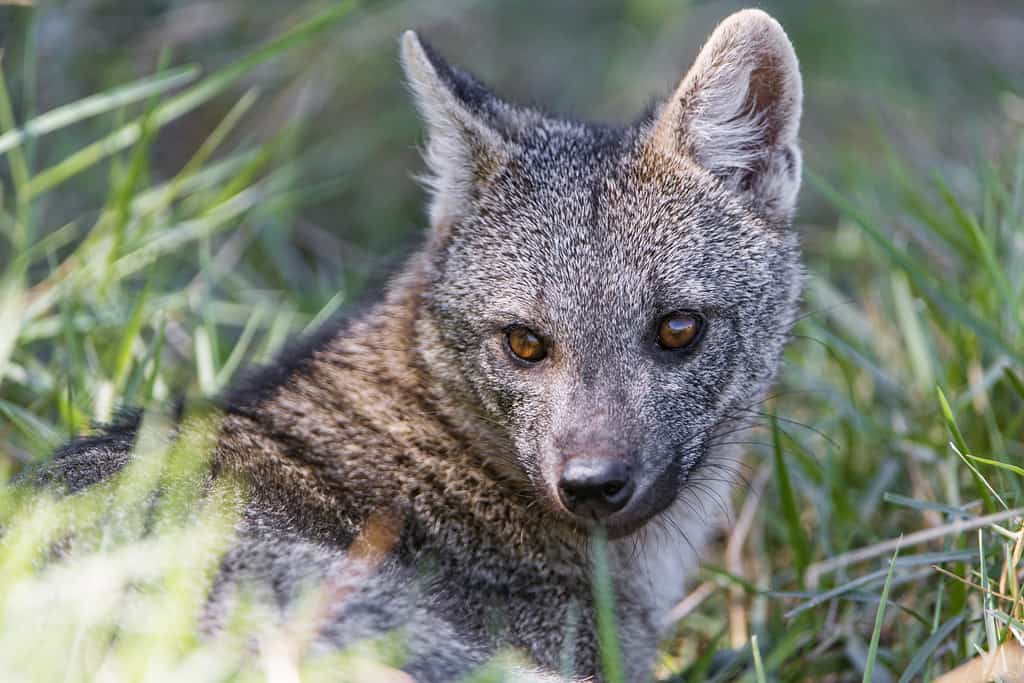
Unlike other types of foxes, the crab-eating fox is not picky with its surroundings. This fox species can live in savannas, forests, shrubs, and woodlands. You can find these foxes in parts of South America, Colombia, and Venezuela. It also populates areas of Paraguay, Uruguay, and northern Argentina.
The crab-eating fox is a medium-sized fox. It can weigh up to 17 lbs., with a length of 11 inches. Its fur is often thick and grayish-brown.
People named them after the fox’s habit of eating crabs, especially during the rainy season. Often, the crab-eating fox can be found on muddy flood plains looking for crabs to eat. Other names for the crab-eating fox include “bush dog,” “maikong,” and “wood fox.”
Culpeo Fox
Scientific name: Lycalopex culpaeus

The Culpeo fox lives in the forests, grasslands, and deserts of southern Chile and Argentina. You can also find some of them in high-altitude areas.
Compared to other types of foxes, the Culpeo fox is quite big. In fact, it is the largest among all the South American foxes. It has reddish-gray fur, which is especially an advantage for those living in deserts.
Culpeo foxes prefer to be alone. They hunt alone and mostly go for rabbits, lizards, and mice. They also eat different plants and carrion.
Darwin’s Fox
Scientific name: Lycalopex fulvipes
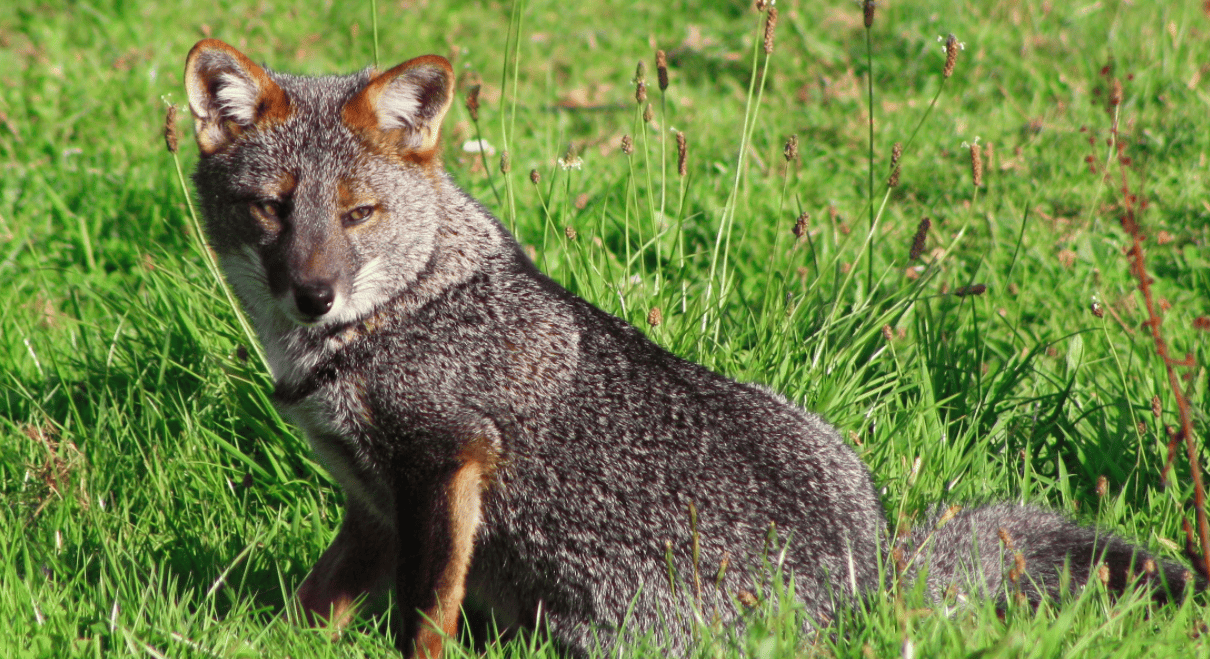
Unfortunately, Darwin’s foxes are the most endangered out of all the types of foxes in the world. There are less than 700 of these foxes left. This is why most of these foxes are closely monitored and protected.
Darwin’s foxes prefer to live in dense forests, but they occasionally drop by open fields. Most of its population lives on Chiloe Island, while the rest lives in Chile’s Nahuelbuta National Park.
This fox species’ name comes from the famous scientist, Charles Darwin. Darwin was the one who first identified this fox type in 1834.
Gray Fox
Scientific name: Urocyon cinereoargenteus

One of the types of foxes in North America and Central America is the gray fox. The gray fox prefers to live in forests and woodland areas.
Its name is fitting as its fur is mostly gray. Some gray foxes’ fur coats, however, have some orange accents. They have distinct black patches on their back and tail.
One trivia about the gray fox is that they are excellent tree climbers. They can climb up trees that are 18 meters tall. Because of this, some people call gray foxes “tree foxes” or “cat foxes.”
Hoary Fox
Scientific name: Lycalopex vetulus
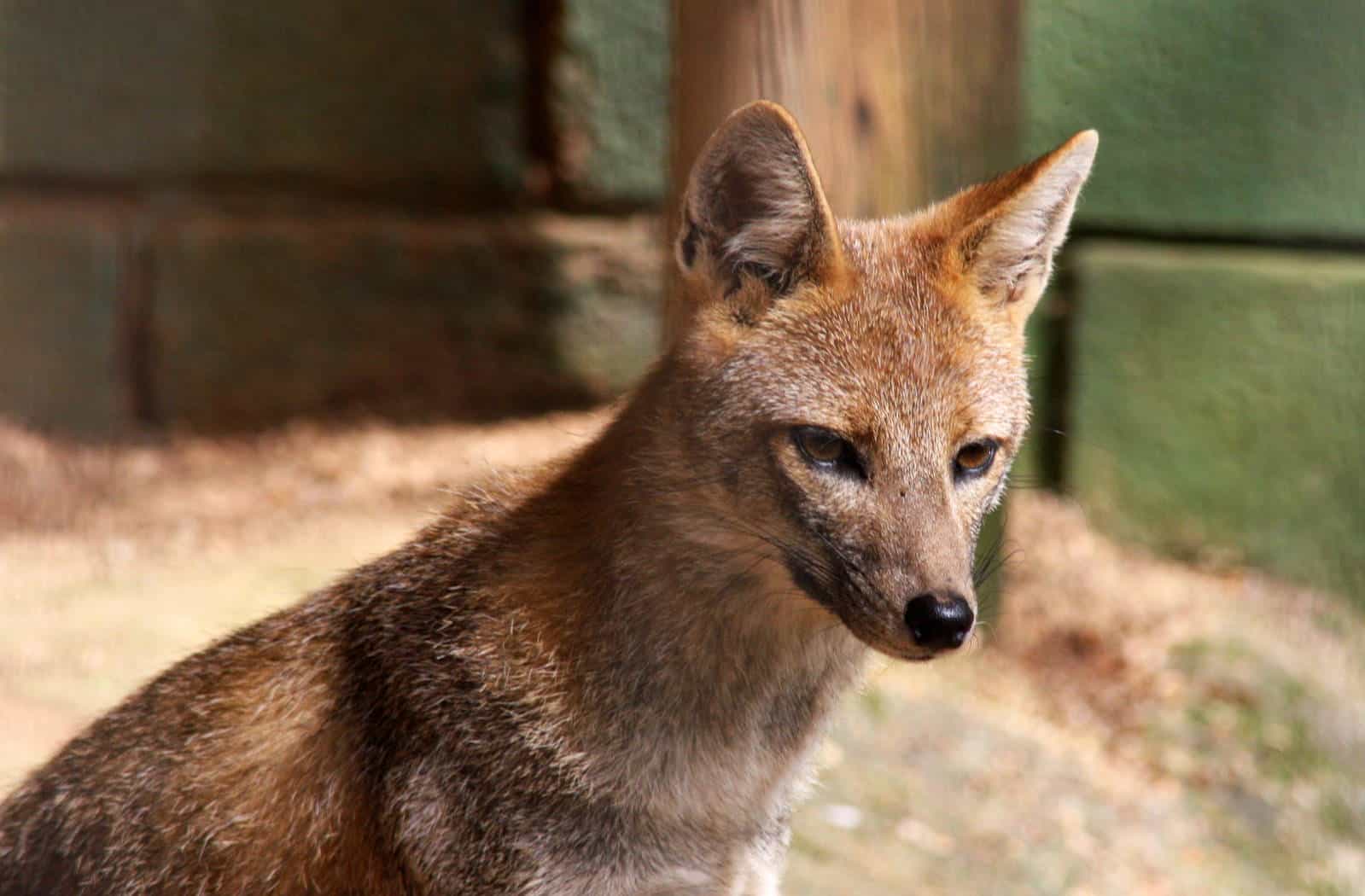
The Cerrado is a tropical savanna ecoregion in the heart of Brazil. Scientists call it “the cradle of waters” because it is the water fountain of South America’s most important rivers and aquifers. This is also where the hoary fox lives.
The hoary fox is small and slender. This fox species is an omnivore like other types of foxes. However, it primarily feeds on insects, such as termites and grasshoppers. It also likes to eat beetles. Occasionally, the hoary fox will also eat fruit and small mammals.
Unfortunately, the hoary fox is a near-threatened species. Because of agriculture and human development, they lost most of their habitats.
Island Fox
Scientific name: Urocyon littoralis
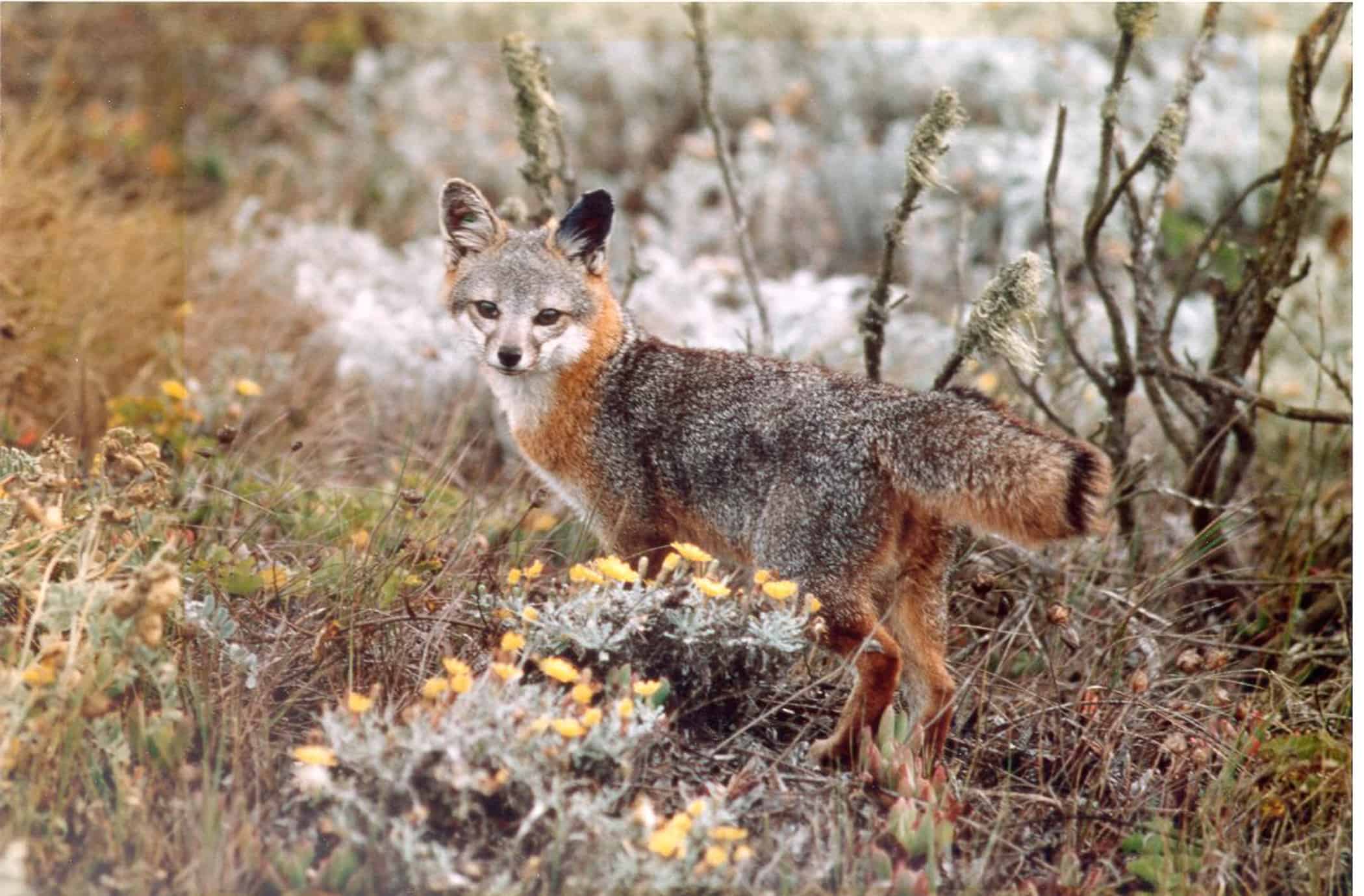
If you’re looking for types of foxes in California, then the island fox is one example. The island fox is endemic to Southern California. It lives in six of the eight Channel Islands off Southern California’s coast.
The island fox is a descendant of the gray fox, and it is one of the world’s smallest canines. Despite this, the island fox is still Channel Islands’ largest native mammal.
Island foxes are a lot gentler than other fox types. In fact, people claim that they are easy to tame.
Pampas Fox
Scientific name: Lycalopex gymnocercus
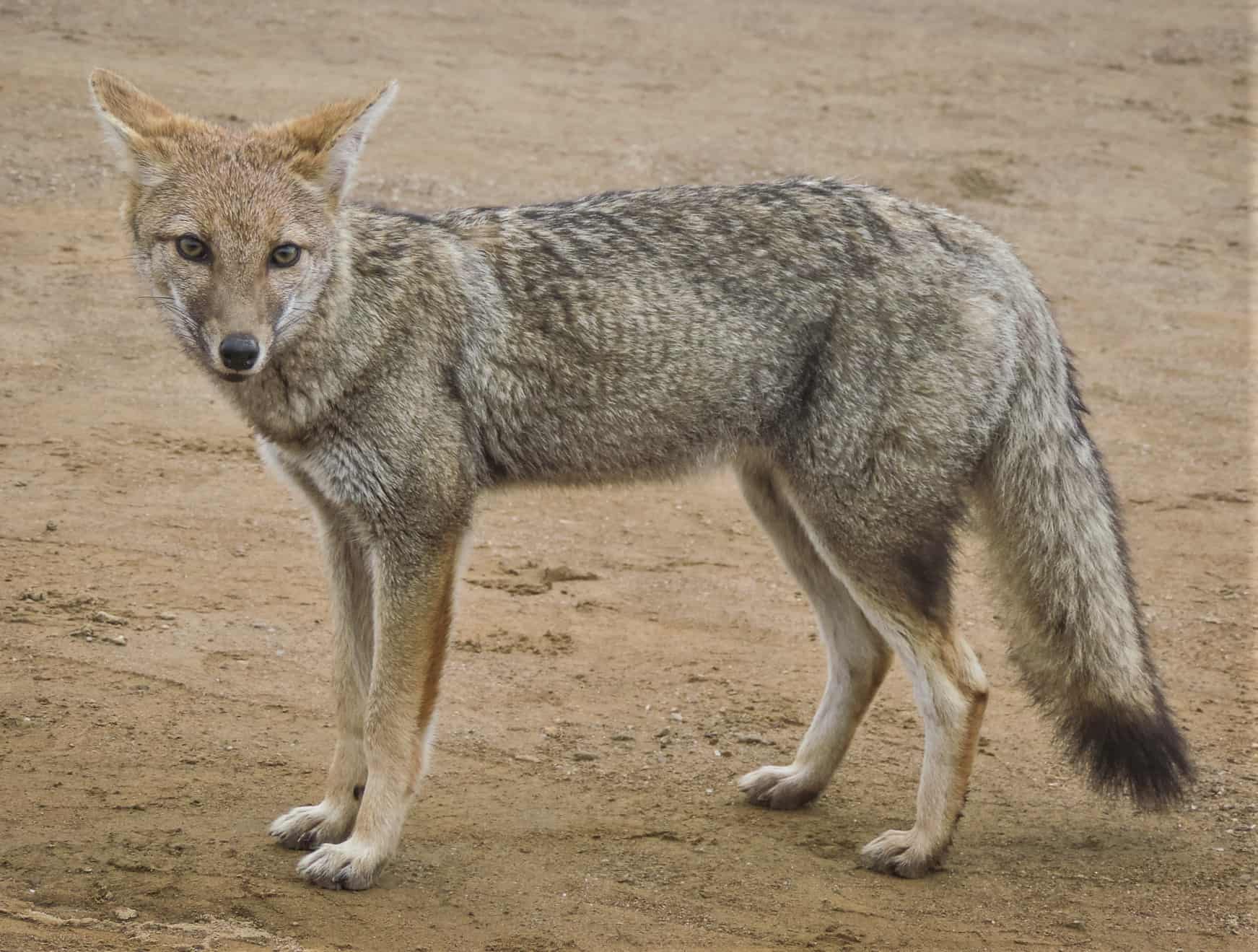
The Pampas fox lives in the open grasslands of central and northern Argentina. Pampas foxes get their name from the Southern American Pampas region, where there are plenty of open grass plains. You can also find them in woodlands, coastal areas, and even landscaped areas.
The Pampas fox bears resemblance to the Culpeo fox. However, the Pampas fox is smaller with a wider snout. These nocturnal foxes like to hunt and forage. They eat hares, snails, and bird eggs, and are also known to eat carrion, fruits, and other insects.
Other names for the Pampas fox include “Pampas zorro” and “Azara’s zorro.”
Sechuran Fox
Scientific name: Lycalopex sechurae

Next on this list of types of foxes is the Sechuran fox. This fox was first sighted in Peru’s Sechura Desert. However, it also lives in various areas of southwestern Ecuador and Western Peru.
The Sechuran fox is relatively small. It mostly has gray fur with white underparts. It also has reddish-brown and gray accents on its face and body.
Another name for the Sechuran fox is the “Peruvian desert fox.” As a desert fox, the Sechuran fox can survive without drinking water for long periods.
Simien Fox
Scientific name: Canis simensis

The Simien fox, or Ethiopian wolf, is a topic of debate of many scientists. Some believe that the Ethiopian wolf is not a wolf, and is more of a coyote. Many, however, are still adamant that the Simien fox is a fox.
The Simien fox is native to the Ethiopian Highlands. It is relatively small, but it has long legs. Its fur color ranges from a clayish brown to rusty red.
This fox species is one of the world’s rarest types of foxes. Unfortunately, the Simien fox is also endangered. Habitat degradation, interbreeding, and disease all threaten the Simien fox population.
Was this page helpful?
Our commitment to delivering trustworthy and engaging content is at the heart of what we do. Each fact on our site is contributed by real users like you, bringing a wealth of diverse insights and information. To ensure the highest standards of accuracy and reliability, our dedicated editors meticulously review each submission. This process guarantees that the facts we share are not only fascinating but also credible. Trust in our commitment to quality and authenticity as you explore and learn with us.


